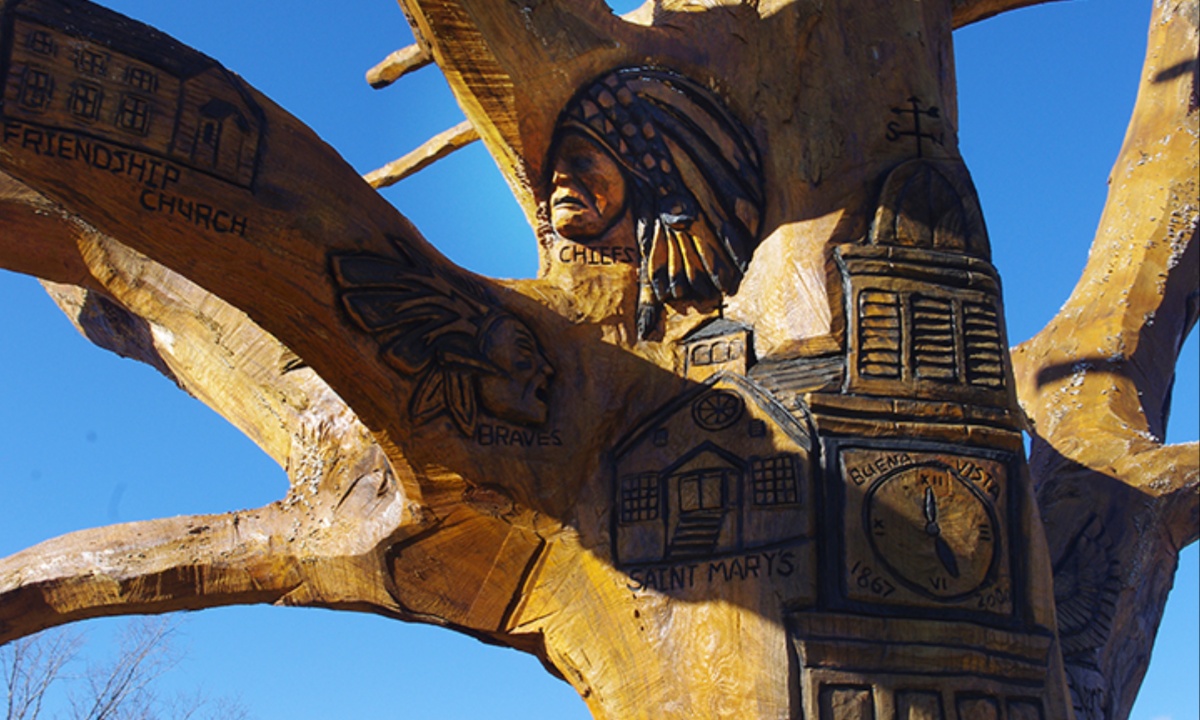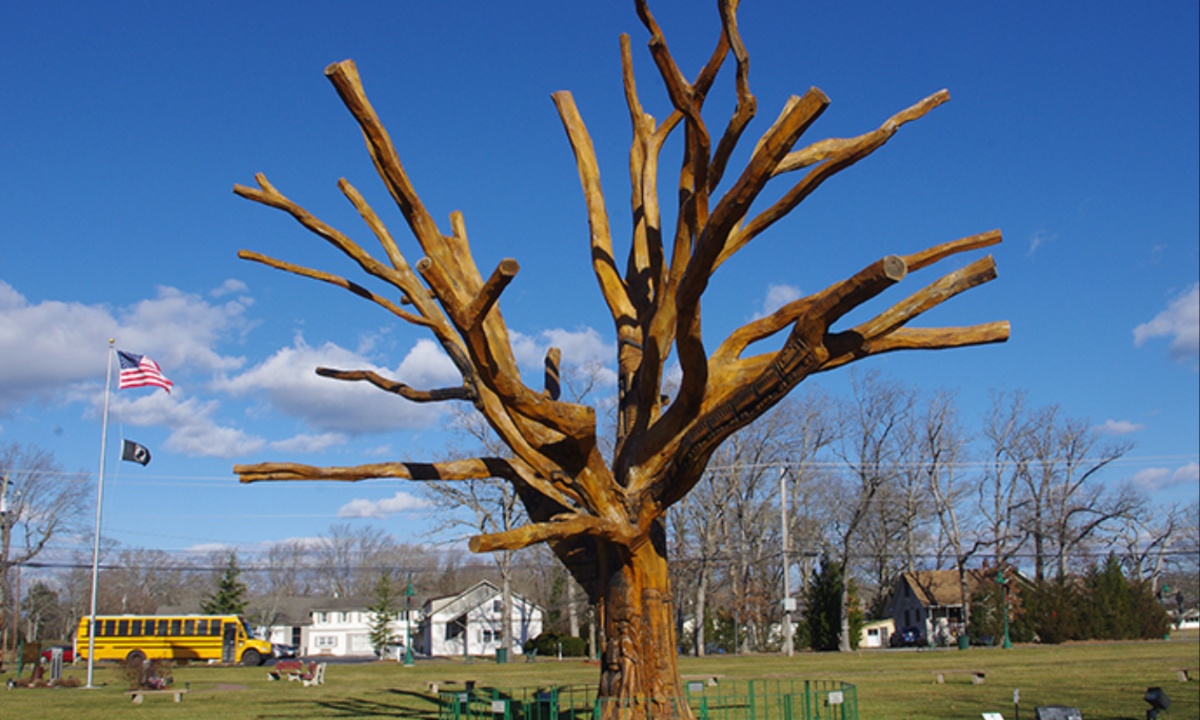Richland, NJ, is a quiet community located along Route 40 in Buena Vista Township, Atlantic County. With a population of about 825, it is easy to pass through without noticing much aside from a replica of the town’s original train depot. However, Richland holds a unique landmark—an enormous, leafless tree standing in a park next to the depot. Unlike an ordinary dead tree, this one has been transformed into an artistic monument, featuring intricate carvings that depict various aspects of the town’s history.
Richland has long been associated with the railroad industry. In 1894, the Pennsylvania Railroad and the Reading Company’s Atlantic City Railroad connected the town to major cities. However, after the Pennsylvania-Reading Seashore Lines were formed in 1933, passenger service to Richland ended in 1935, leaving the town primarily serviced by freight trains. Today, occasional excursion trains from Cape May Seashore Lines still operate from a small-scale replica of the original Richland Depot, keeping the town’s railroad legacy alive.
The Transformation of the White Oak
One of Richland’s most significant landmarks was a towering White Oak tree that stood in Saw Mill Park for over two centuries. The tree, believed to be 235 years old, was a symbol of the town’s heritage until it died in 2015. Rather than removing it, town officials, led by Mayor Chuck Chiarello, saw an opportunity to repurpose it into a historical monument. Through community fundraising efforts and the skilled work of tree surgeon Gary Heitz and chainsaw artist Brian Ackley, the dead oak was transformed into a remarkable sculpture.

The carved tree monument is rich with symbolism, depicting nearly 40 different images that represent Richland’s past and present. Some carvings, like churches, a sawmill, the general store, and railroad tracks, highlight the town’s development. Others are more unexpected, such as Father Time representing history, an owl symbolizing local wildlife, and a deer acknowledging the region’s natural environment. Even local businesses, such as Richland Carpet, have been included in the artwork, making the monument a true reflection of the community.
A Lasting Tribute to Richland’s Heritage
At the base of the monument, a marble marker tells the story of the ancient White Oak and its transformation into a work of art. The inscription highlights the tree’s impressive dimensions before it died and acknowledges the efforts made to preserve its legacy. At night, ground-mounted lights illuminate the sculpture, casting dramatic shadows that bring figures like the Indian Chief, Father Time, and the Wise Old Owl to life. The monument has since become one of Richland’s most distinctive attractions, drawing visitors interested in its history and craftsmanship.
One of the most unusual chapters in Richland’s history occurred in 2004 when the town temporarily changed its name to “Mojito.” This was part of a marketing partnership with Bacardi, which donated $5,000 to the township in exchange for placing a sign on Route 40 celebrating the name change. The decision was tied to Richland’s Dalponte Farms, a significant supplier of mint, the key ingredient in the mojito cocktail. This quirky event is even carved into the Tree Monument, ensuring that this amusing yet historical moment remains part of Richland’s story.
